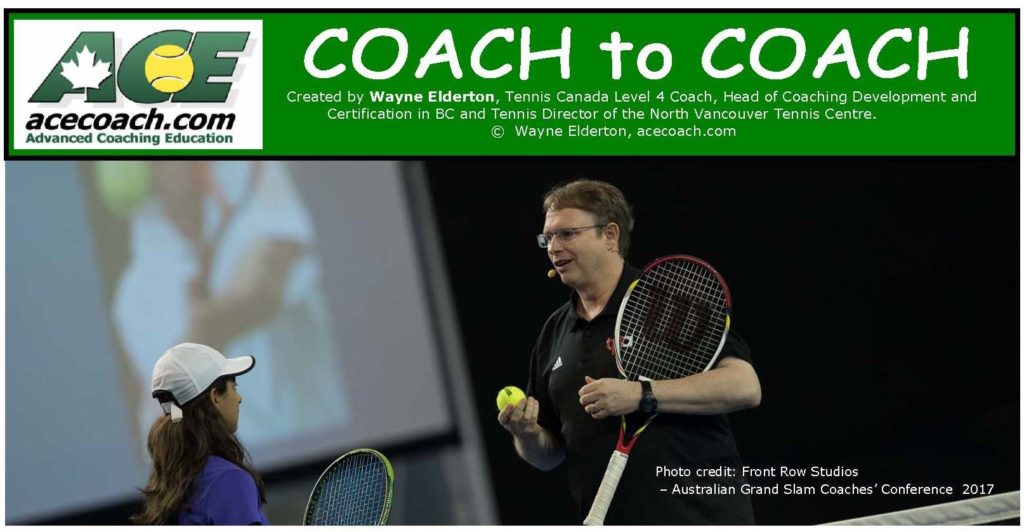
In this series, we have looked at various aspects of feedback, answering the big questions:
- Why?
- How?
- When?
WHY?
The two critical elements needed to learn anything (whether music, math, tennis, etc.) is repetition and feedback. In tennis, repetition creates repeatable communication patterns between our brain, central nervous system, muscles, etc.
In simple terms, feedback is the process of holding up a mirror to a player’s performance so they can know what is required to perform effectively (and improve). This is accomplished by either directly communicating to the player or setting up an environment where they gain feedback on their own. Either way, no feedback = no learning.
No feedback = no learning
For both repetition and feedback to be effective, we also identified that, since tennis uses Open Skills (Click here for video on Open Skills), the main goal is adaptation of tactics and technique rather than robotic replication of movements.
As a result of all this, coaches need to understand that feedback is a ‘coaching power tool’ that tremendously enhances learning. If coaches want to be focused on the player’s needs (Learner-centred), they need to be masterful at the science and art of feedback.
HOW?
The series covered several types of feedback. If coaches know the various options available to them, they can coach more effectively. This helps eradicate the misconception that coaching (and feedback) is just about telling people how to do things or telling them what they are doing wrong. It is about being an architect of learning environments.
The types of feedback we explored included (click each one to take you to the specific article):
- Part 1: Coaching Feedback Series Introduction
- Part 2: Communication Styles (Directive versus Cooperative feedback)
- Part 3: Outcome versus Process feedback
- Part 4: Internal (intrinsic) versus External (Extrinsic) feedback
- Part 5: Purposeful Feedback (Prescriptive versus Motivational feedback
- Part 6: The Power of Positive Feedback
- Part 7: Implicit versus Explicit feedback
- Part 8: Feedback Modes (Visual, Auditory and Kinesthetic feedback)
WHEN?
The other aspect of feedback we explored was the ‘when’ of feedback, which included feedback timing (when the feedback is received in relation to the performance) and feedback scheduling (the frequency and amount of feedback received). (Click here for Part 9: When to give feedback)
- Feedback Timing:
- Terminal
- Concurrent
- Feedback Scheduling:
- Immediate
- Delayed
- Summary
- Bandwidth
- Faded
Suppose we frame tennis as a challenge of tactical problems players solve by adapting the appropriate technique. In that case, the types and scheduling of feedback need to prioritize players being confident, independent, problem-solvers. They need to re-create their technical solutions when required and adjust them to the specific situation encountered.
There will be times when being directive and providing the solutions is helpful coaching. However, all too often, the coach’s feedback mainly consists of dictating to players how to do things or focusing on what they are doing wrong. That process will not lead to confident, independent problem solvers.
It is about being an architect of learning environments
Wayne Elderton – Coachng Educator
CONCLUSION
Coaching requires domain-specific knowledge, just like most professions. A tennis professional studies all the complicated aspects of their field to make it simple for the player. The goal is to provide effective feedback that truly lands on and transforms how players play the game.
As coach educator myself I would like to congratulate you on great work in emphasising the need for holistic approach in developing tennis players.
I believe that especially Passion continuum concept will help many coaches in better understanding and supporting players on their tennis pathway!
Hrvoje Zmajic, International Coach and Player Development consultant
Thanks Hrvoje. I am very appreciative of praise coming from such an experienced international coach as yourself.